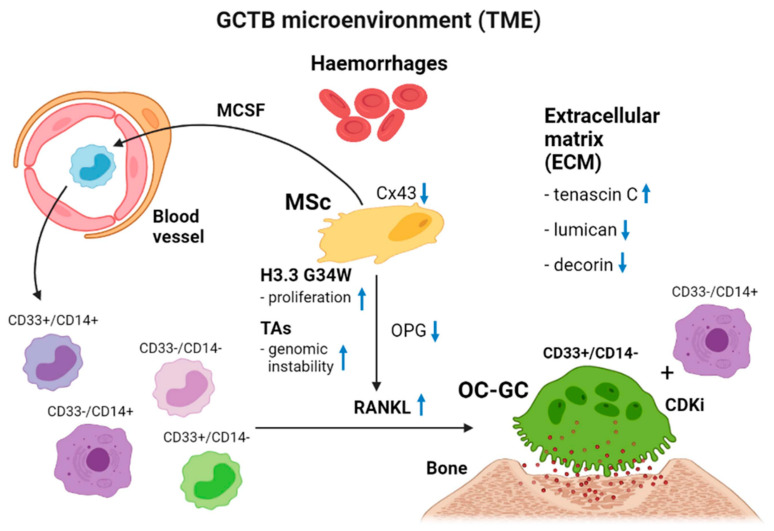Figure 2.
Schematic representation of the tumour microenvironment of GCTB. MCSF, macrophage colony stimulating factor; MSc, mononuclear spindle cell; TAs, telomeric associations; TME, tumour microenvironment; ECM, extracellular matrix; OPG, osteoprotegrin; OC-CG, osteoclastic giant cell. The interference of the four different components of GCTB makes the biological behaviour of GCTB unpredictable. The mononuclear spindle-shaped cell as first component harbours an H3.3 driver mutation affecting several internal and external cell biological processes. By secretion of MSCF, blood-borne monocytes are attracted to the tumour microenvironment. Under the influence of extensive RANKL in combination with a lower OPG secretion by the neoplastic cell, high numbers of large osteoclastic giant cells (second component) are formed by fusion of CD33+/CD14−, CD33+/CD14+ and CD33−/CD14+ macrophages. These osteoclastic giant cells are responsible for the osteolytic properties of GCTB. Macrophages not committed to osteoclastogenesis are regarded as tumour-associated macrophages (third component). The extracellular matrix (fourth component) facilitates the mobility of cells in the matrix by expressing tenascin and underexpressing decorin and lumican. The presence of haemorrhages is mostly seen in primary tumours that behave more aggressively or that give rise to benign metastatic lung plugs. Finally, a circulus vitiosus of osteolytic expansion has been created by the tumour itself.

